The Flat-Coated Retriever is a breed of hunting dog that is primarily used to retrieve games from water and land. These dogs are intelligent, friendly, mischievous, and companionable, and have a strong bond with the owner, making them excellent companions and family dogs for active people.
History of the Breed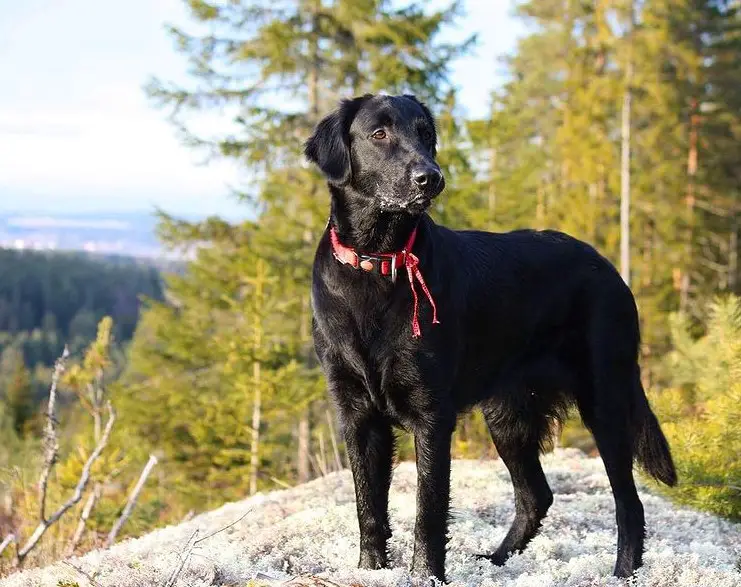
The Flat-Coated Retriever is a direct descendant of the Wavy Coated Retriever, which in turn is descended from the Water Dog St. John. By the middle of the 19th century, as a result of competent selection work, the Flat-Coated Retriever, as intended, had become an almost universal assistant for a hunter with excellent handling abilities and an elegant appearance.
According to the surviving data, many breeds participated in the development of Flat-Coated Retrievers: Irish Water Spaniel, Bloodhound, Foxhound, Scottish Collie, as well as Bulldogs and Terriers. A new breed was introduced in 1860 under the name Wavy Coated Retriever. The most prominent representatives were the dogs of the breeder R. Bryceford, it was they who became the ancestors of the first lines.
Further selection brought some changes to the breed, including the coat, which became impervious to water and lost its waviness. It was decided to change the name of the breed. In 1898, dogs were first listed in the English Kennel Club’s studbook under the name Flat-Coated Retriever. Over the next several decades, the breed did not yield to its position on the list of the most popular in the UK. In 1923, the Flat-Coated Retriever Association was founded. In 1935 the breed was officially recognized by the FCI.
Appearance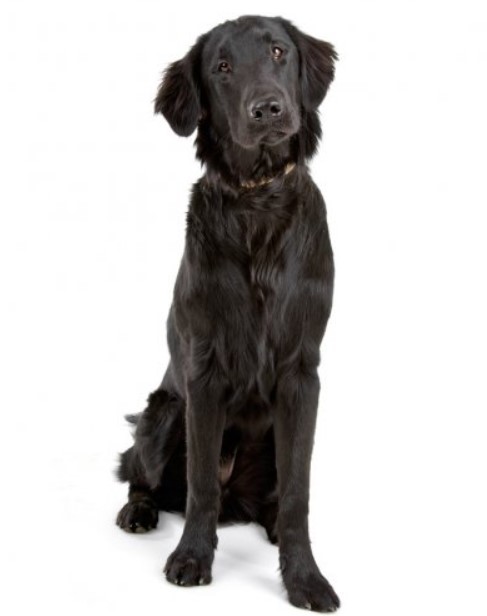
The Flat-Coated Retriever is an active, medium-sized dog that demonstrates power and swiftness in all its appearance without heaviness and excessive dryness. The preferred height of males is 59-62 cm, weight ―27-36; the growth of females is 56-59 cm, weight is 25-32 kg.
The head is solid, elongated. The skull is moderately broad and flat. Nostril open, good size. The jaws are strong. The teeth are healthy and strong. The eyes are dark brown in color, medium in size with an intelligent and friendly expression. The ears are well set, close to the sides of the head, relatively small.
The neck is rather long, without dewlap, set obliquely to the shoulders, smoothly merging into the back at an angle that allows the dog to search for a trail. The body is proportional. The rib cage is wide, deep with a well-defined sternum. The loin is square, short. The straight tail never rises above the level of the back, very energetic and agile. The limbs are straight, well-boned, the paws are round, the toes are well-knit, the pads are strong and thick. The position of the limbs is confident, parallel, allowing smooth, free movement, straight and parallel in front and back.
The coat is thin or of medium thickness, as straight as possible, dense. Longer on the legs and tail. Fully formed in adulthood. Two colors are recognized: black and liver.
Personality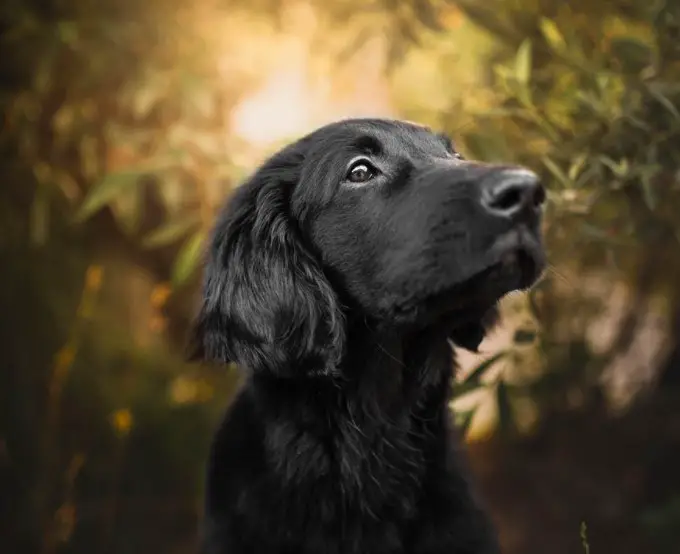
The Flat-Coated Retriever has a friendly temperament. He is balanced, full of inner dignity, while mischievous and energetic with a high need for communication and movement. He loves everyone around him and should always be in the center of events. He has an optimistic outlook on life and often seems somewhat careless, his love for all family members is boundless. It matures a little more slowly than other dogs, and retains playful energy until old age, which makes him an interesting companion, but causes some learning difficulties. Flat-Coated Retriever strives to be part of the family and is very person-centered, responsive, and sensitive.
At home, he behaves quite calmly, he can lie next to the owner for a long time in front of the TV, but when he finds himself on the street, he is ready to run, wallow in puddles and jump headlong into a pond. Whatever the Flat-Coated Retriever does, the level of tail wagging is always off the scale. Great for older children as a friend and play companion. Maybe overly energetic and persistent for toddlers and seniors who lead a measured lifestyle. The owner must have a good sense of humor, which will help to understand and experience the antics of the cunning and resourceful dog, as well as a lot of free time and the desire to spend it with the dog.
If strangers approach the house, the dog will give a voice. However, he cannot be counted on as a dog for protection. At a close meeting, ill-wishers are often greeted with a cheerful wagging of their tail. Get along well with other dogs. He will try to dominate, but he achieves leadership very tactfully, without suppressing his fellow. He usually lives peacefully with cats. Can cohabit with small animals, but has a weakness for birds.
Care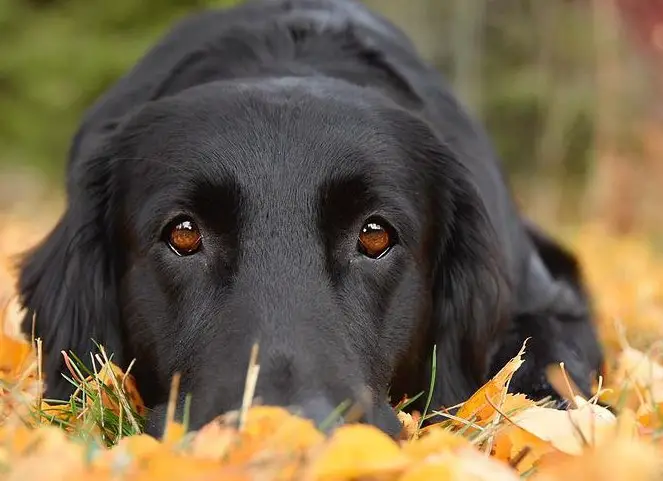
The Flat-Coated Retriever is very energetic and active. Imitation of hunting behavior during games and walks will help him fully develop physically and psychologically. Walking around the house isn’t enough for a Retriever. He should be able to run freely and be encouraged to swim and play with other dogs. The total duration of daily walking should be about 90 minutes.
The Flat-Coated Retriever does do not require complicated care. Grooming comes down to brushing the coat 1-2 times a week, weekly brushing your ears and teeth, bathing monthly, and trimming your nails as needed. In addition, it is advisable to dry ears well after swimming in a pond.
Health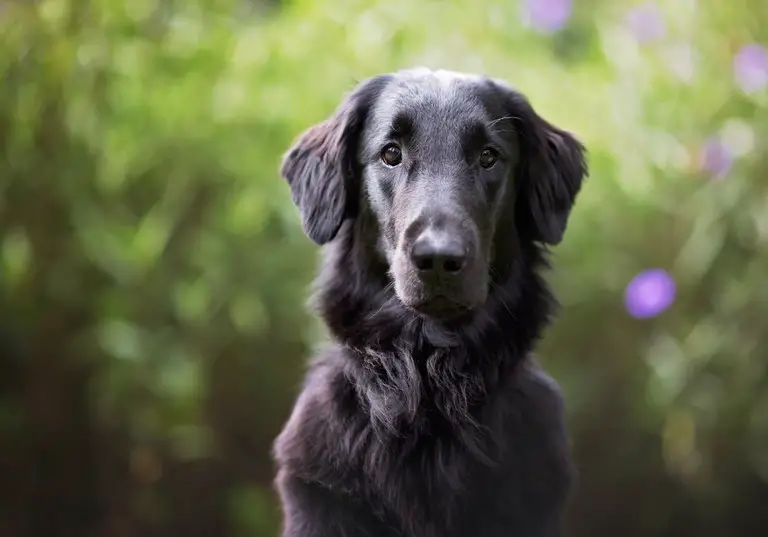
In general, the Flat-Coated Retriever is a healthy breed. This was largely achieved thanks to competent breeding work. Today, dogs are recommended to be tested for pathologies and diseases known in the breed:
- Dysplasia of the hip and elbow joints;
- Patella luxury;
- Ophthalmic diseases.
Owners of Flat-Coated Retrievers are advised to undergo an annual examination by an ophthalmologist and a one-time gonioscopy. X-rays are taken at 24 months to check for dysplasia. Breeding animals are tested for the presence of the fawn color gene. Every year, dogs should be vaccinated against major infectious diseases and treated against external and internal parasites according to the scheme. The average life expectancy is 11-12 years.
